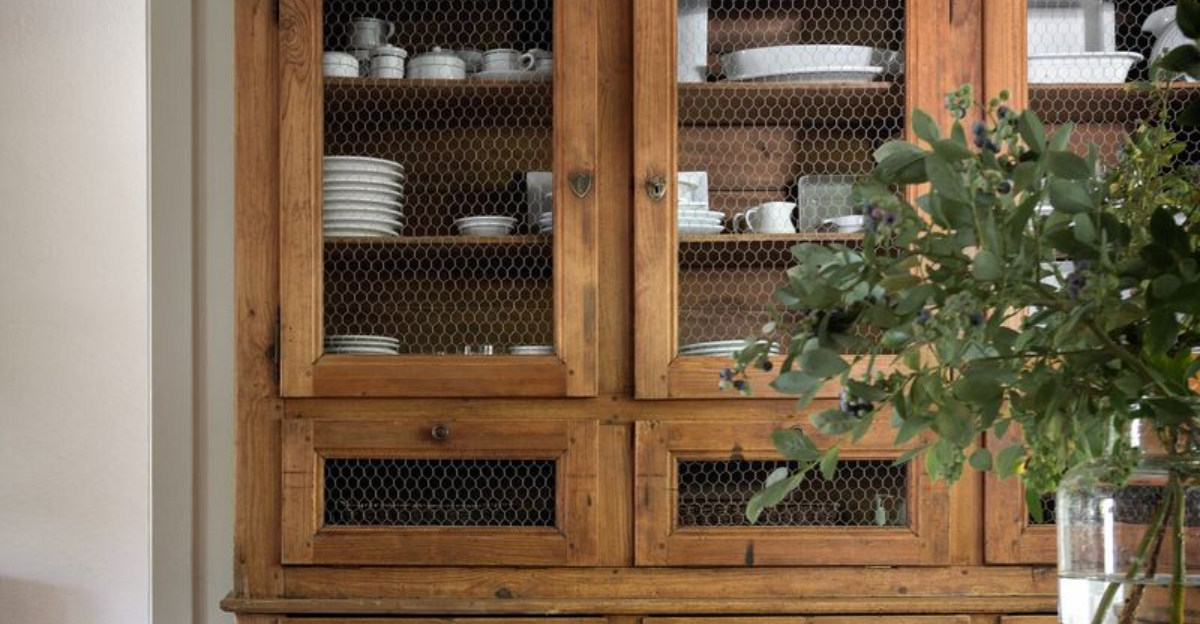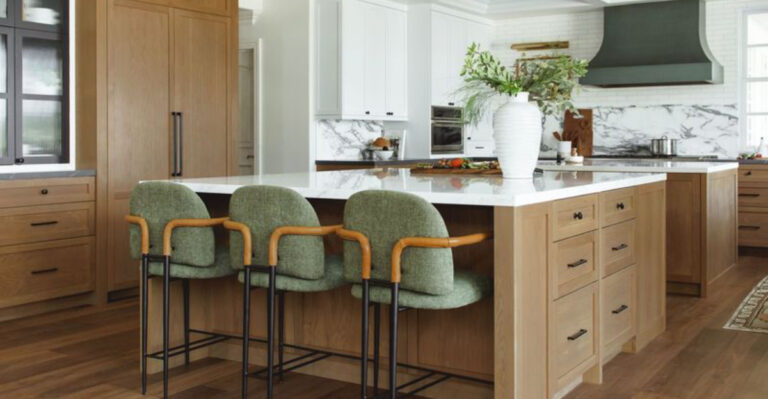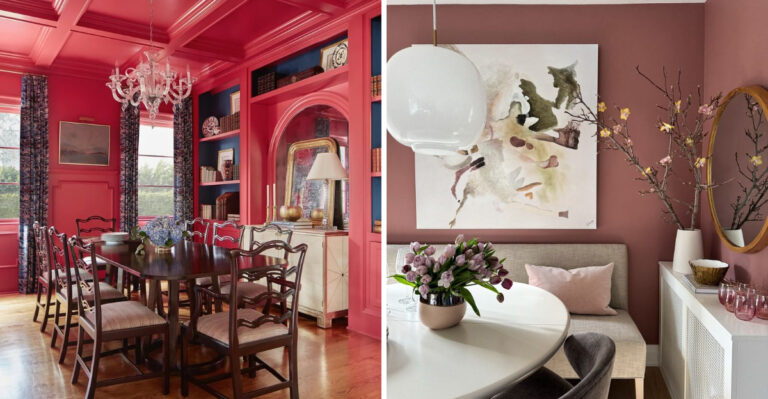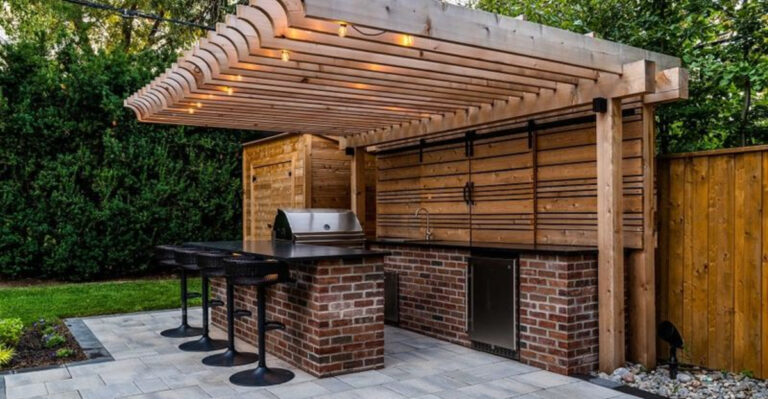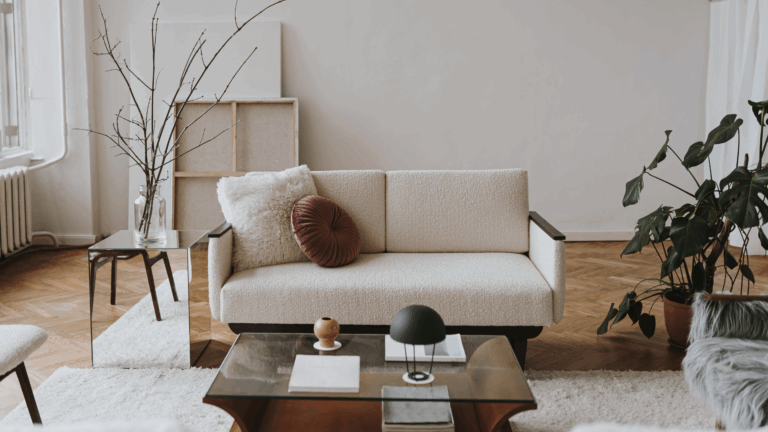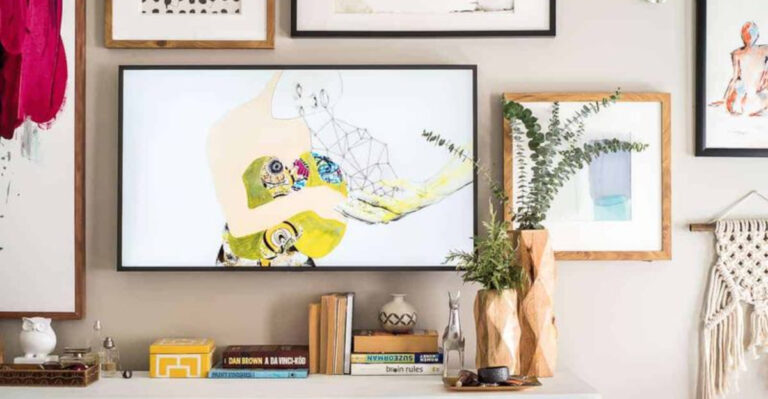10 Farmhouse Trends On Their Way Out In 2025 (And 7 That Should’ve Been Gone Already)
I’ll admit it, I was all in on the farmhouse trend a few years back. But now? Some of those once-charming touches are starting to feel a little tired. The distressed everything, the endless white paint, the same old shiplap wall… it’s like walking through a design déjà vu.
In 2025, designers are giving farmhouse style a major glow-up with cleaner lines, richer textures, and a more intentional feel.
If your space still leans heavily on those dated farmhouse staples, it might be time for a rethink. Some trends are simply ready to ride off into the sunset, and honestly, that’s okay.
1. Barn Doors Sliding Out of Style
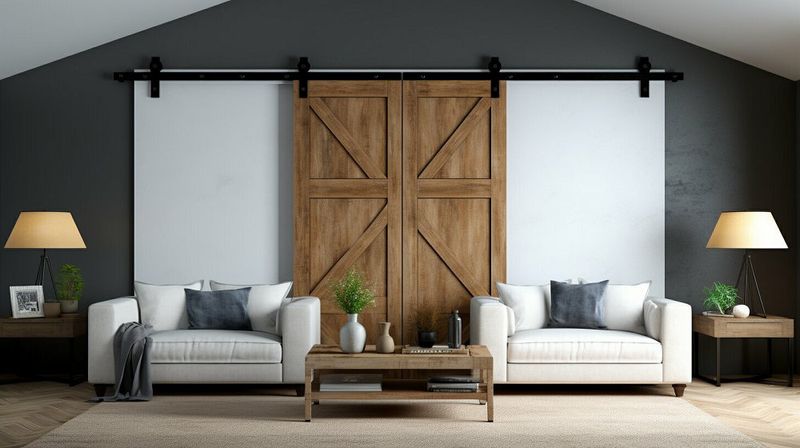
What once seemed like the perfect space-saving solution has become the poster child for dated farmhouse decor. Those chunky wooden sliders that everyone rushed to install are now being viewed as dust collectors that rarely slide smoothly after a few years of use.
Homeowners are instead embracing pocket doors or stylish French doors that offer cleaner lines and better functionality. The noisy, track-mounted barn door is quickly becoming a telltale sign of a home stuck in the 2010s.
2. Shiplap Everywhere

Joanna Gaines may have single-handedly launched the shiplap revolution, but the all-white horizontal planking that once covered every available wall is losing its appeal fast. Designers report clients specifically requesting shiplap removal during renovations.
In its place, textured plaster walls, warm wood paneling, and even bold wallpaper are making dramatic comebacks. The new approach focuses on using architectural details more sparingly and intentionally rather than as a one-size-fits-all solution for adding character.
3. Distressed Everything
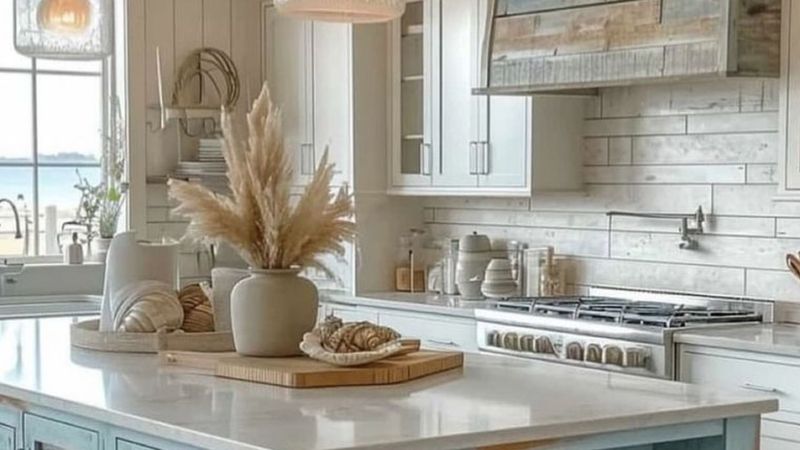
The artificially aged look that dominated farmhouse style is finally showing its true age. Furniture and decor items with intentional chips, scratches, and weathered finishes are being recognized for what they often are – new items made to look old and worn.
Genuine vintage pieces with natural patina are still valued, but the mass-produced “distressed” look is fading fast. Today’s homeowners prefer clean lines and authentic materials that age gracefully on their own terms rather than items pre-damaged at the factory.
4. Typography Word Art
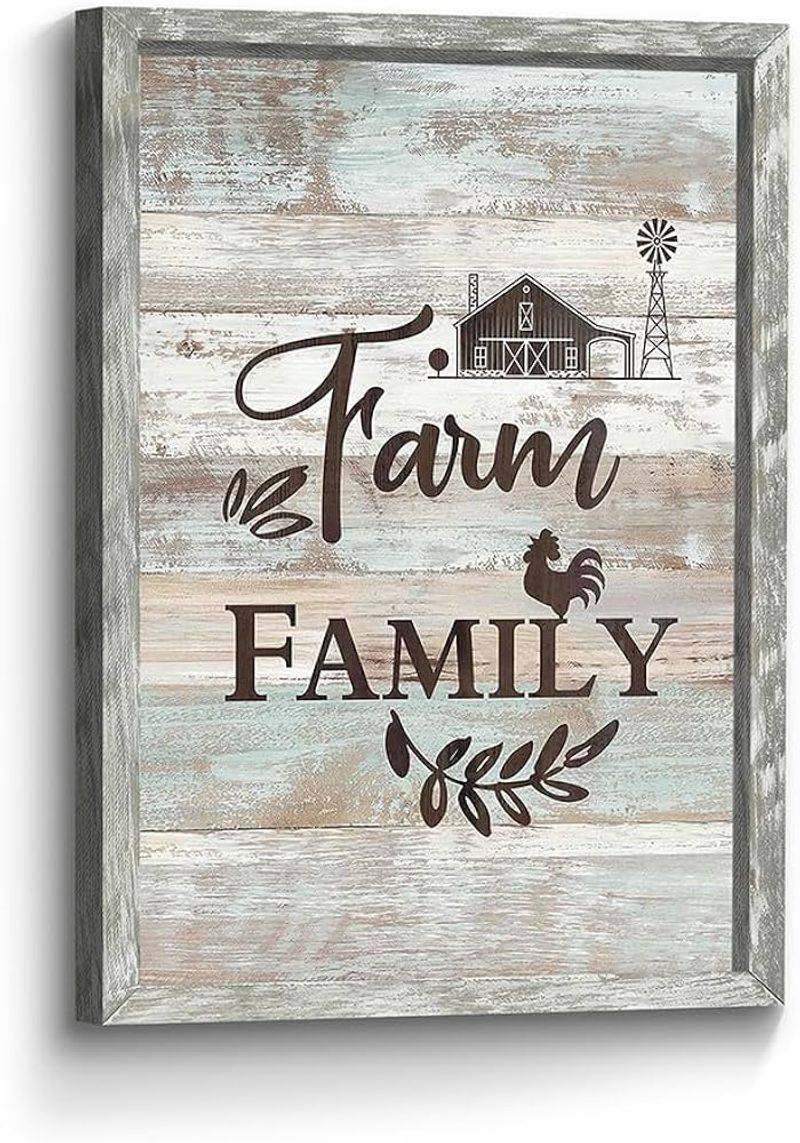
You’ve seen them everywhere – oversized wooden signs proclaiming “Farmhouse,” “Gather,” or “Blessed” in curly fonts. These text-based decorations became the quickest way to identify a farmhouse-styled home, but they’ve lost their charm through overexposure and mass production.
Interior designers are now gravitating toward actual artwork that conveys personality without spelling it out literally.
5. White-on-White-on-White
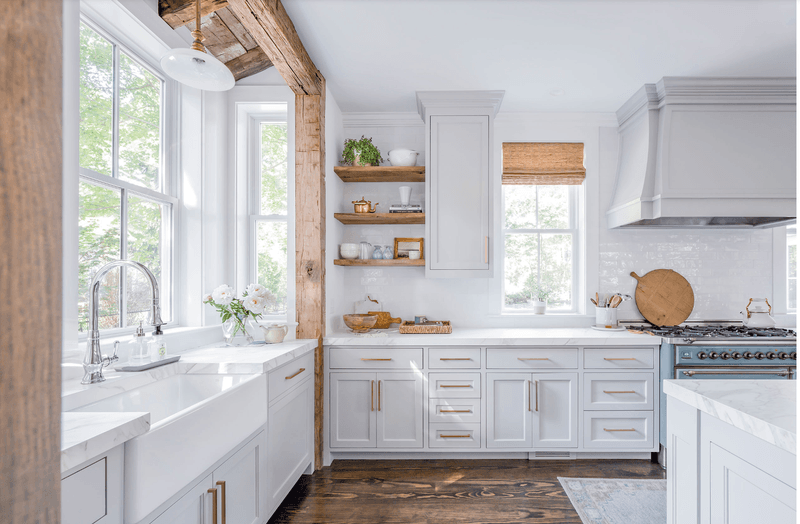
The all-white farmhouse kitchen with white cabinets, white subway tile, white countertops, and white walls is finally losing its grip on American homes. This monochromatic approach, while photogenic, has proven impractical for actual family living and now feels sterile rather than fresh.
Warm woods, rich greens, and even dramatic black elements are working their way into modern farmhouse designs. The new palette embraces contrast and depth while maintaining brightness through strategic color placement rather than blanket whitewashing.
6. Buffalo Check
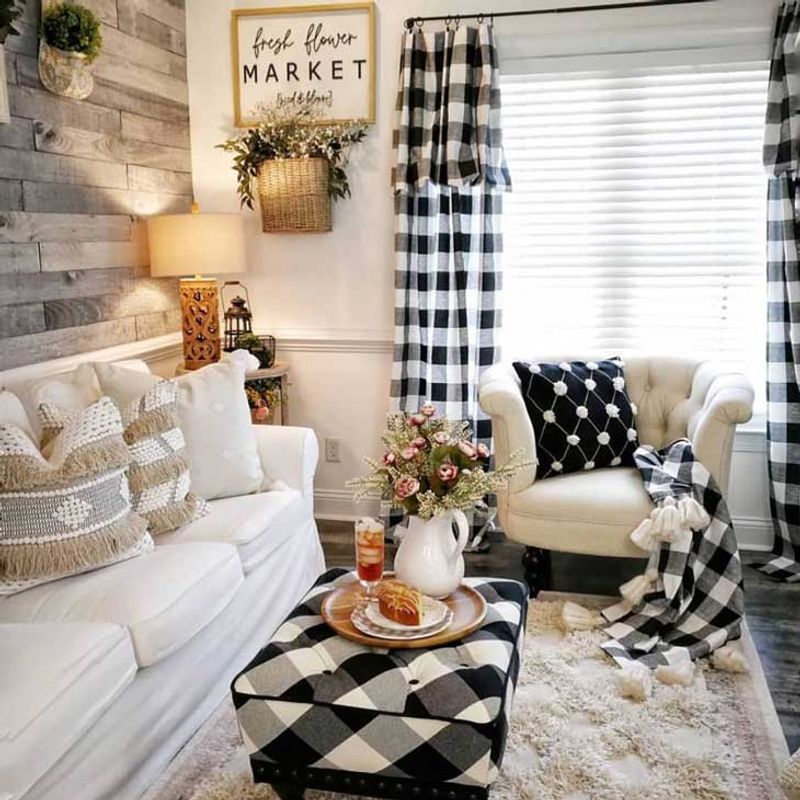
The black and white buffalo check pattern became so synonymous with farmhouse style that it appeared on everything from throw pillows to bathroom towels. This bold pattern quickly went from charming to overwhelming as it multiplied across every soft surface in farmhouse-styled homes.
Subtle textural fabrics, small-scale patterns, and solid linens with interesting weaves are now preferred for their versatility and longevity.
7. Pallet Wood
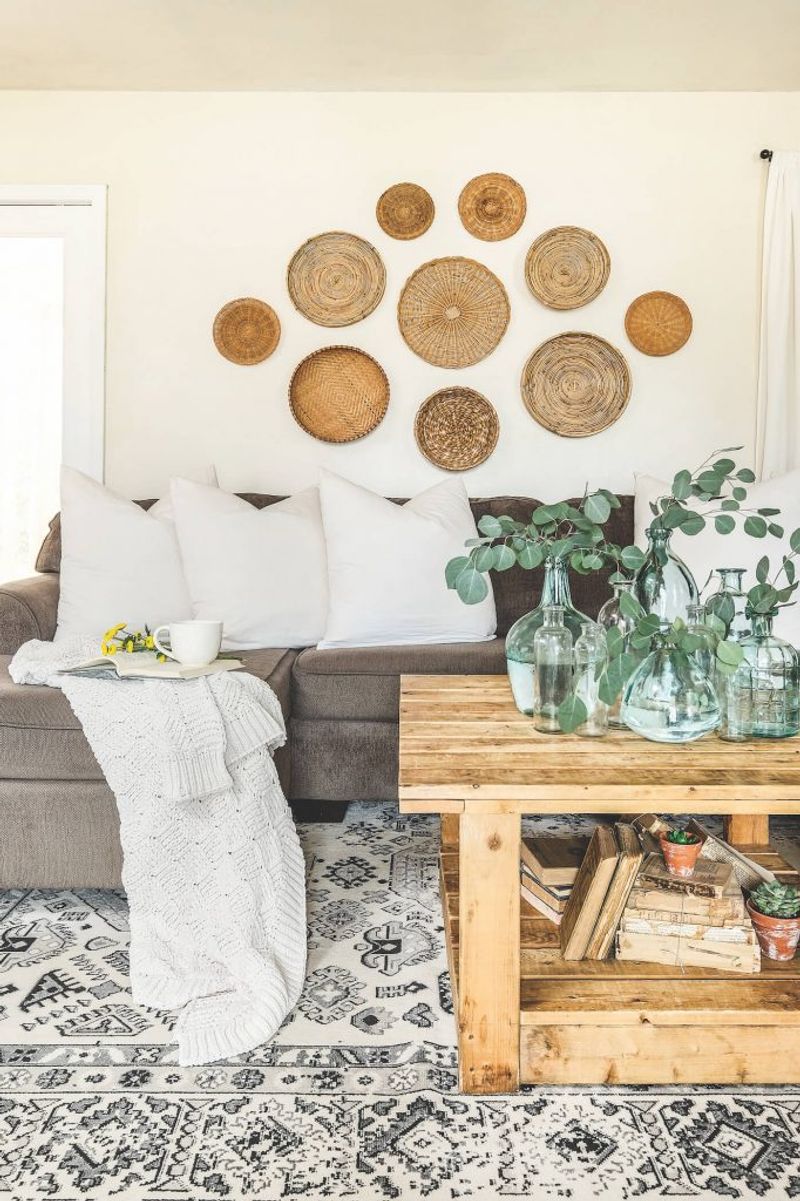
The DIY pallet wood trend gave us headboards, coffee tables, wall coverings, and countless signs – often with questionable construction and finish quality. While reclaimed wood still has its place, the roughly constructed pallet projects are rapidly disappearing from stylish homes.
Quality wood furniture with proper joinery and smooth finishes is making a comeback. Today’s homeowners understand that sustainable wood usage doesn’t have to mean rough-hewn shipping materials repurposed beyond recognition.
8. Galvanized Metal
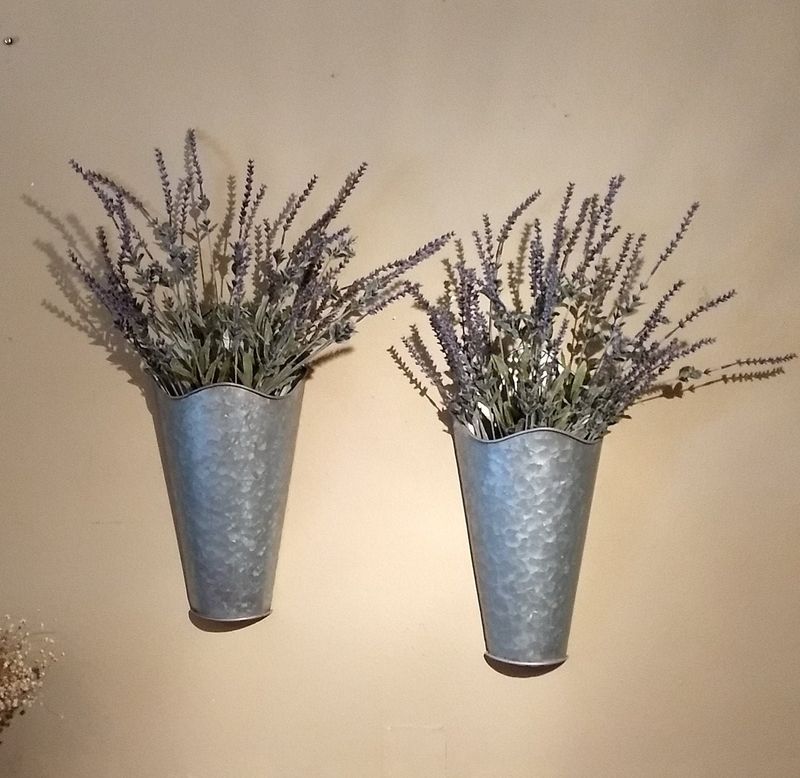
From watering cans to light fixtures, the shiny-yet-rustic look of galvanized metal became a farmhouse staple that quickly saturated the market. These utilitarian farm implements repurposed as decor now feel more theme-park than tasteful in most homes. Warmer metals like brass and bronze are taking center stage, along with matte black finishes that offer contrast without the agricultural references. Even in lighting, the galvanized metal “barn light” is giving way to more sophisticated fixtures with cleaner lines.
9. Barn Stars
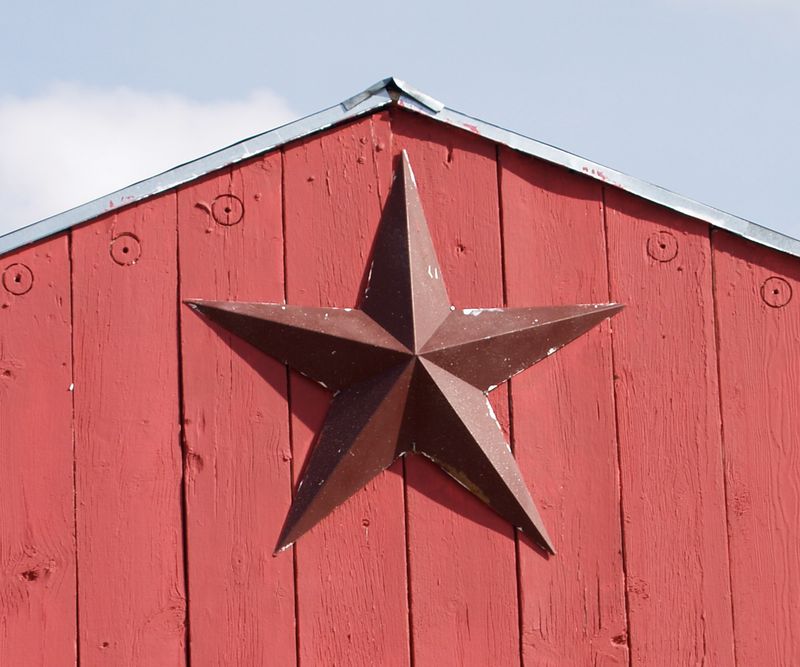
From above garage doors to interior walls, the metal barn star became an almost mandatory element of farmhouse style. Originally a Pennsylvania Dutch good luck symbol, these stars multiplied across suburban homes with no agricultural heritage whatsoever.
Architectural elements with actual function – like properly scaled lighting, address numbers with style, or authentic regional decor – are replacing these generic symbols. The trend reflects a broader move toward decorating with intention rather than following a farmhouse checklist.
10. Open Shelving Overload
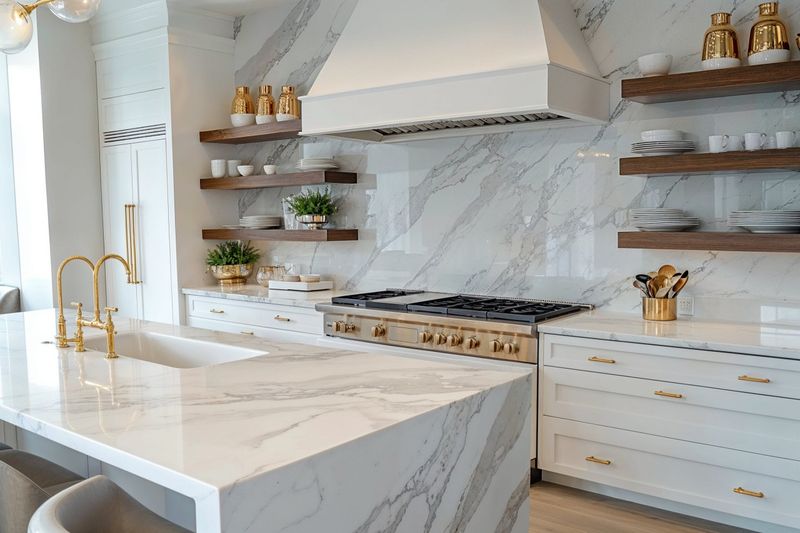
Removing upper cabinets in favor of open shelving became a farmhouse kitchen must-do, despite the practical challenges of dust collection and display pressure. The reality of maintaining picture-perfect shelves has proven exhausting for many homeowners.
A more balanced approach is emerging, with maybe just one strategic open shelf section amid proper storage cabinets. The new kitchens prioritize function first, with carefully considered display areas rather than exposing entire dish collections to the elements.
1. Fake Distressed Finishes
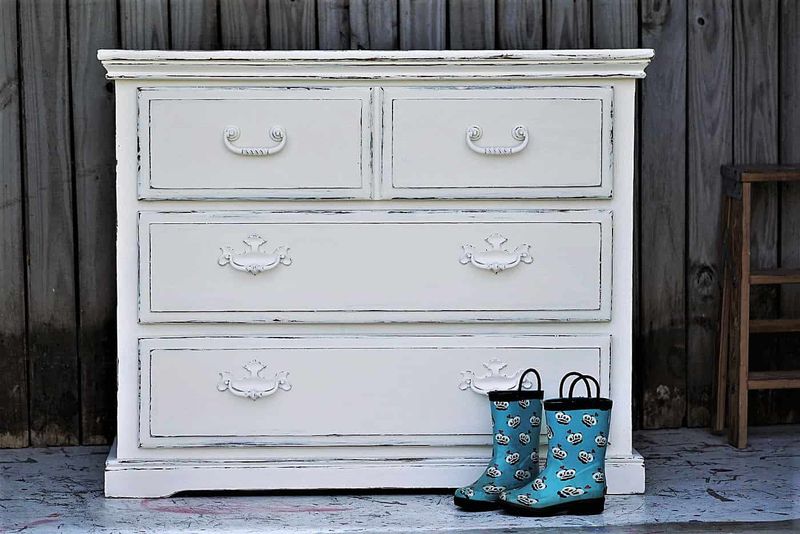
The chalk paint and sandpaper revolution gave us countless furniture pieces with artificially distressed edges and deliberately incomplete paint coverage. This manufactured “age” quickly became one of the most recognizable hallmarks of farmhouse style.
Quality finishes that highlight rather than hide the materials beneath are now preferred. When vintage pieces are refinished, the approach tends to be more restoration than reinvention, preserving authentic character rather than creating a faux-aged appearance.
2. Rustic Signs with Cutesy Phrases
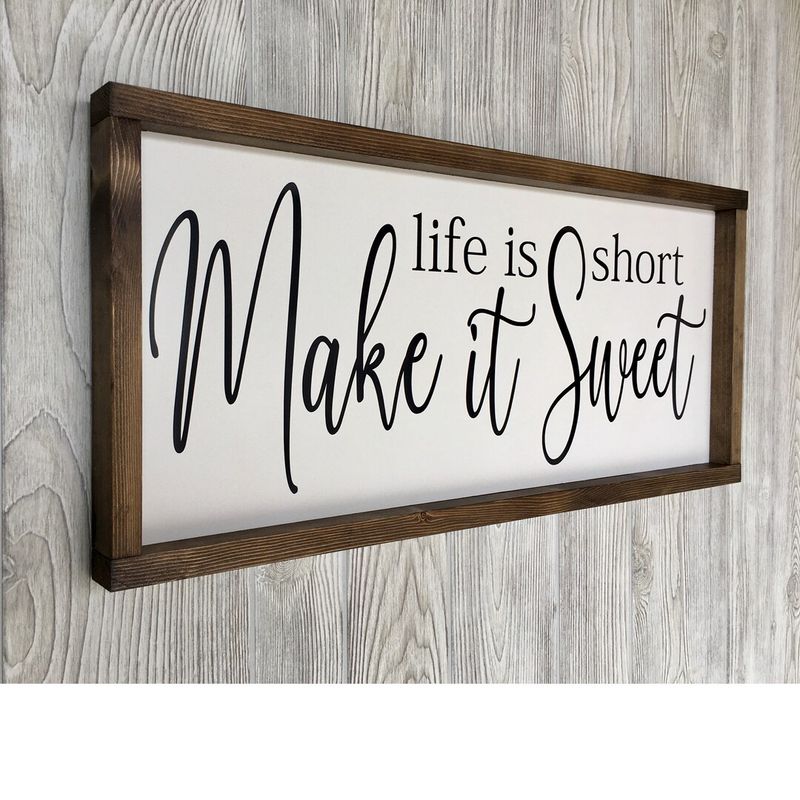
Those weathered wooden signs bearing phrases like “Fresh Eggs 25¢” or “Farmhouse Kitchen” are quickly becoming the wallpaper borders of our era – instantly dating a space. Even homes nowhere near actual farms embraced these rural-themed declarations. Contemporary homes are embracing actual art with personal meaning rather than mass-produced sentiments. The shift represents a move toward authenticity in decor choices rather than adopting a wholesale “farmhouse personality” through store-bought signage.
3. Artificial Farmhouse Flowers
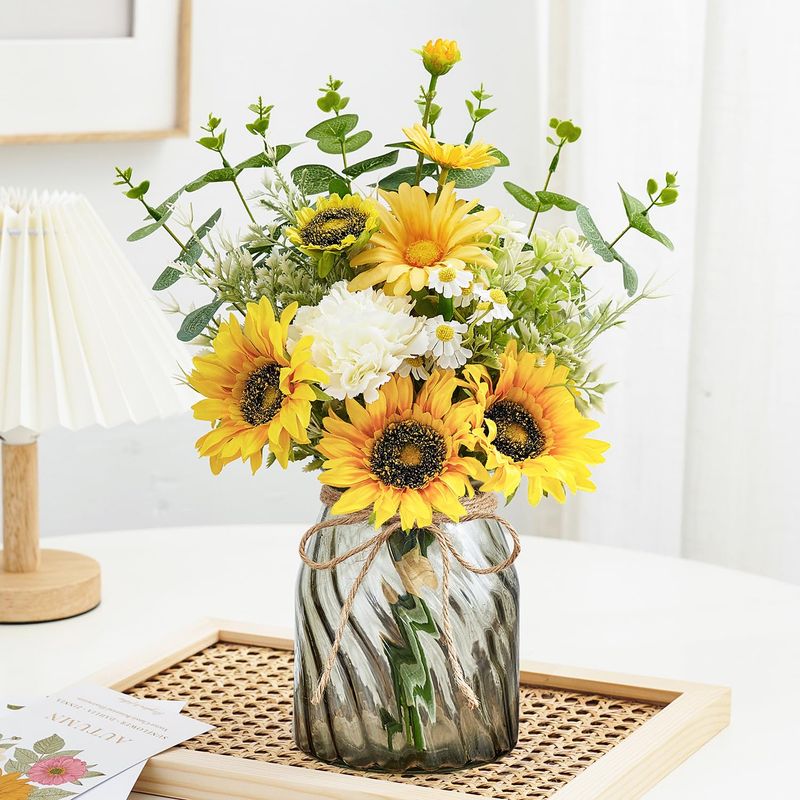
Cotton stems, lambs ear, and eucalyptus became the artificial greenery trinity of farmhouse style. These dusty, muted arrangements in galvanized buckets or white ceramic pitchers signaled farmhouse dedication throughout the 2010s.
Fresh seasonal flowers, living plants, and high-quality silk botanicals in contemporary vessels are taking their place. The new approach embraces color and variety rather than the limited, desaturated palette that defined farmhouse florals.
4. Mason Jar Overload

Remember when every surface featured a collection of blue-tinted Mason jars filled with everything from flowers to bathroom cotton balls? The Mason jar obsession reached peak saturation years ago, yet many homes still cling to this ultra-rustic storage solution.
Forward-thinking decorators are now selecting sleek ceramic vessels or handblown glass containers that deliver sophistication rather than country kitsch. The days of turning preserved food containers into light fixtures and soap dispensers are finally behind us.
5. Overdone Animal Decorations
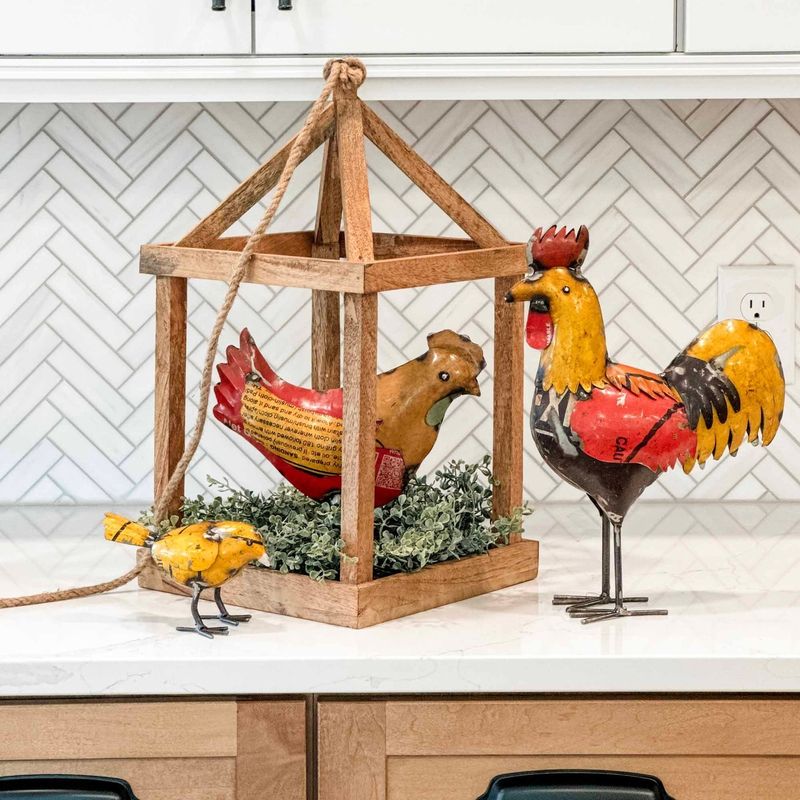
The era of overcrowding spaces with animal motifs is waning. While farmhouse style once embraced an abundance of animal-themed decorations, modern designs are opting for subtlety. Imagine a living room where a single elegant horse statue graces a shelf, offering sophistication without clutter.
Minimalist animal prints now adorn walls, adding character without overwhelming the senses. This shift acknowledges that less is often more, emphasizing quality over quantity.
6. Oversized Vintage Butter Churns As Decor
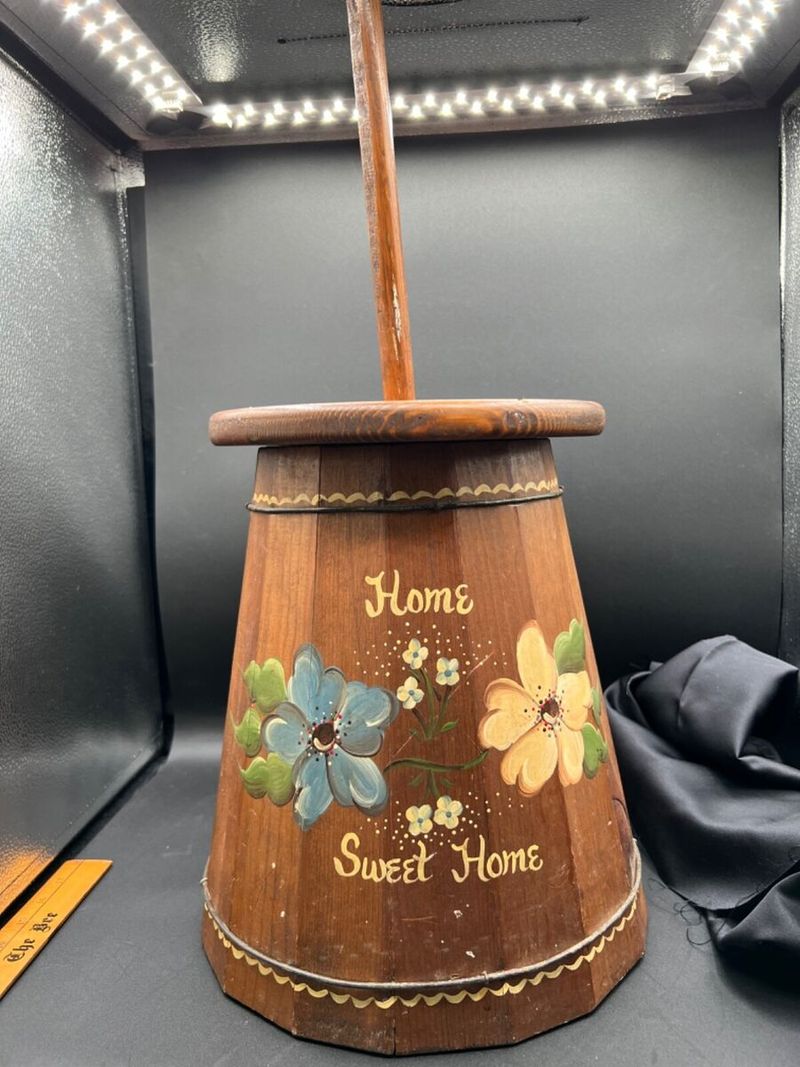
Those giant antique butter churns sitting in living room corners are finally churning their way out of style! Once considered the perfect rustic statement piece, these clunky wooden relics are now trying too hard to be authentic.
Homeowners are realizing that displaying farm equipment you’ve never used feels a bit like wearing a cowboy hat in Manhattan. The dust-collecting monstrosities often came with questionable backstories about great-grandma’s dairy farm.
Replacing them? Actual functional pieces or authentic family heirlooms with real stories. If you didn’t churn butter last Tuesday, maybe that 4-foot wooden barrel doesn’t belong next to your smart TV!
7. Chicken Wire Cabinet Fronts
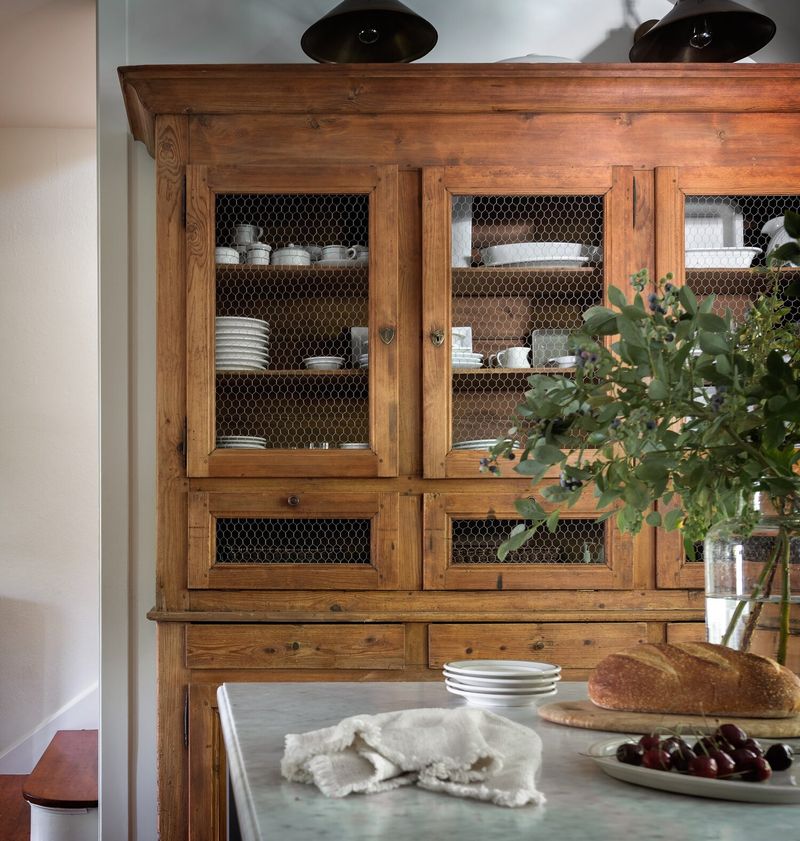
Remember when putting chicken wire on perfectly good cabinet doors seemed like a brilliant idea? Those poultry-inspired panels that promised farmhouse charm while showcasing your mismatched mug collection are finally flying the coop!
The reality of chicken wire cabinets included constantly wiping fingerprints, explaining to guests why your kitchen resembles a hen house, and the special joy of items occasionally falling through the gaps.
Not to mention the weird shadows they cast at night, spooky! Designers are now embracing clean cabinet fronts that don’t require weekly dusting or tetanus shots during installation.

